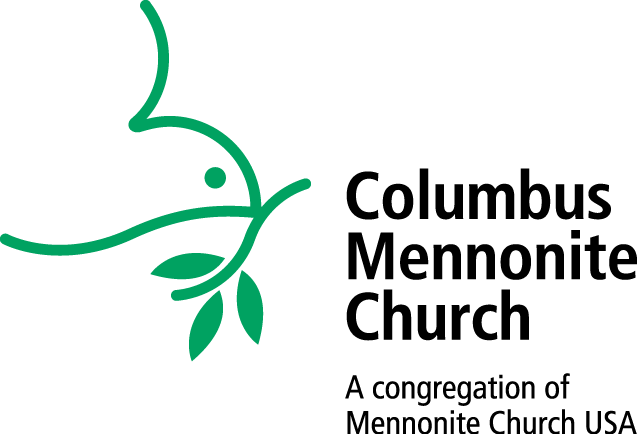“A baptism of repentance” | 6 December 2015 | Advent II
Texts: Malachi 3:1-4; Luke 3:1-18
More than any other gospel passage, Luke chapter 3 situates itself firmly within the political and religious landscape of its time. “In the fifteenth year of the reign of the Emperor Tiberius, when Pontius was governor of Judea, and Herod was ruler of Galilee, and his brother Philip ruler of the region of Ituraea and Trachonitis, and Lysanias was ruler of Abilene, during the high priesthood of Annas and Caiphas.” In the ancient world, referencing such leaders was a way of telling time, but it also serves another purpose. The story I’m about to tell you is no fairy tale, Luke could be saying. It happened at a specific time, in a particular location, under these circumstances. There were real people involved, people with names and stories of their own. People whose daily lives were enmeshed in the kind of world these rulers and religious leaders oversaw. What I want to tell you, Luke goes on, is that under these conditions, “the word of the Lord came to John, son of Zechariah, in the wilderness.” The Word, that life-creating, mind-shaping, path-making Divine force, came, through John, out in the wilderness. In that wilderness, all around the region of the Jordan River, John proclaimed a baptism of repentance.
In the seventh year of the presidency of Barack Obama, when John Kasich governed Ohio, when Michael Coleman was mayor of Columbus, when Francis was the Pope of the Catholics, and Ervin Stutzman the Executive Director of the Mennonites. At this time and in this Advent season we gather here, in this place, to listen for that Word – that life-creating, mind-shaping, path-making Divine force which comes to us through song and scripture and speech and the warmth of one another’s presence.
We talk about the wilderness during the season of…
A righteous branch | 29 November 2015 | Advent I
Text: Luke 21:20-33
We step off the bus after a short ride from the Bethlehem Star Hotel where we’d stayed our first three nights of the trip. Off to our right is the entrance to the Aida refugee camp, one of three Palestinian refugee camps in Bethlehem. In front of us is the Lajee Center, a community center working with Palestinian youth and families who’ve been living in Aida their whole lives. We are met by Salah Ajarma, a guy who looks to be about my age. He is the Director of the Lajee Center and will be our guide for the morning. His wife is pregnant and they’re expecting their fourth child any day, so Salah begins by noting that he is keeping his cell phone turned on.
Before leading us on a walking tour through Aida and introducing us to the Center, Salah leads us off to the left. This used to be a main business street in Bethlehem, he notes. But now it looks awful. Buildings are in poor repair, and nobody’s shopping or selling. The street and sidewalk are littered with debris. We walk slowly up the slope of the road, but we can’t go very far this direction. Just ahead of us, about 100 yards from the Center, stands a 25 foot tall concrete wall, with a guard tower where Israeli soldiers are stationed. Bethlehem is in Palestinian territory, but the wall snakes all around Bethlehem, isolating places like Aida and creating separation zones for the 22 Israeli settlements being built in the area.
Our first day in Bethlehem we had been just on the other side of that wall, meeting with an Israeli woman explaining to us why Rachel’s Tomb was so important to her and observant Jews – Rachel, the second wife of the patriarch…
Tearing Down and Building Up | 15 November 2015
Text: Ephesians 2:14-22
The night that I first came out, when I first said those words “I’m gay”, that night was a sacred night for many reasons. I know that many of you have already heard some of that story, but there is a piece that I don’t think I have shared yet, partially because it is something that, even now, I continue to unpack and wrestle with.
After the tears and after the holy conversation where my pastor and mentor assured me that God loved me not in spite of but because of who I am, after all this, while I was getting ready to leave he said something to me that I will never forget. He looked me in the eyes, and very quietly and very thoughtfully he said, “You know, in at least some small way, I envy you.”
I think it was at this point that I just simply stared at him in disbelief. Envy me? What could there be to envy about the years of struggle that I had gone through and the many more years of struggle that I could only imagine were ahead of me. Sure, the single greatest thing about being gay is the possibility of sharing clothes with a partner, but could that be what he meant?
He went on, “I envy you because I believe that you are able to know God in a way that I never can.” Here was my mentor, a straight, white, Mennonite pastor, telling me that because I am gay, that I know God in a way that he can’t, in a way that is worth envying. He didn’t elaborate and I had a whole lot of other things going on in my head at the time, so the night ended on that note. At the time, my ability…
And Jesus said unto them, “People-watch with me.” | 8 November 2015
Texts: 1 Kings 17:8-16; Mark 12:38-13:2
I don’t know about you, but I enjoy people-watching. People are interesting. People are different. People-watching is a way appreciating humanity from afar, from the safety of one’s own corner seat, or perch, or however you like to position yourself to people-watch.
Tomorrow I’ll be flying from Columbus to Newark to Tel Aviv, meaning I’ll be passing through one of the prime locations for people watching: airports. People watching and day dreaming are closely related cousins as we see people greeting each other, people walking briskly from one place to another, wearing whatever kind of expression on their face, and our mind can’t help but wonder where it is they are coming from and where they are going. What are they in such a hurry to get to? Who are they anxious to see?
If you want to take it to another level, what’s really interesting is watching people watch people – it’s like a dream within a dream. Your eyes can shift back and forth between the watcher and who they are watching, and you try and notice what is it is they are noticing. This works as long as someone doesn’t have the same idea and start watching you watch them.
About a month ago Radio Lab had a rather fascinating episode about how reality TV has changed not only how we view TV but also how we view reality itself. People act differently when they know they’re being watched, or even if they imagine themselves being watched. Add in ubiquitous surveillance cameras, and the fact that just about everyone has a quality video recorder in their pocket, ready to be put to use at any time, and people watching isn’t what it used to be.
I also wonder if people watching in its pure form…
Anna Jansz of Rotterdam | 1 November 2015
Texts: Revelation 19:6-9; Isaiah 25:6-9
HWB 411 I bind my heart this tide, v. 1
Since we observed All Saints/All Souls Day last year, and are doing it again this year, I guess that makes it a tradition. It’s one that’s new to me, but one I hope we can continue. Along with our lighting of candles for loved ones who have died, I’d like to use this Sunday each year to tell the story of one of our Anabaptist or Mennonite forbearers.
In thinking about this I realized, to my own shame, that I know very little about any historical Anabaptist female leaders. I suppose my excuse is the fact that the most prominent leaders were men. The early Anabaptists did elevate women to a greater place than they had been, but it was a far cry from an egalitarian or liberation movement for women.
So I emailed my friend Gerald Mast who teaches Communication at Bluffton University, who, coincidentally, was the speaker here the Sunday just before my first Sunday. And Gerald quickly provided a list of Anabaptist women that will last us for many years to come. He also noted that his favorite story is Anna Jansz of Rotterdam. So that sounds like a good place to start. A bonus here is that there are a number of connections with Revelation, so we aren’t leaving there yet, and you’ll notice that the Tree of Life is still looming.
My main sources, in case you’re wondering, are, of course, the Martyr’s Mirror, which, as you can tell, has a few other stories in it as well. This wonderful book called Profiles of Anabaptist Women: Sixteenth Century Reforming Pioneers. I’m also grateful to Gerald for an essay he recently wrote about Anna. And another source, from which I will briefly quote, is…

